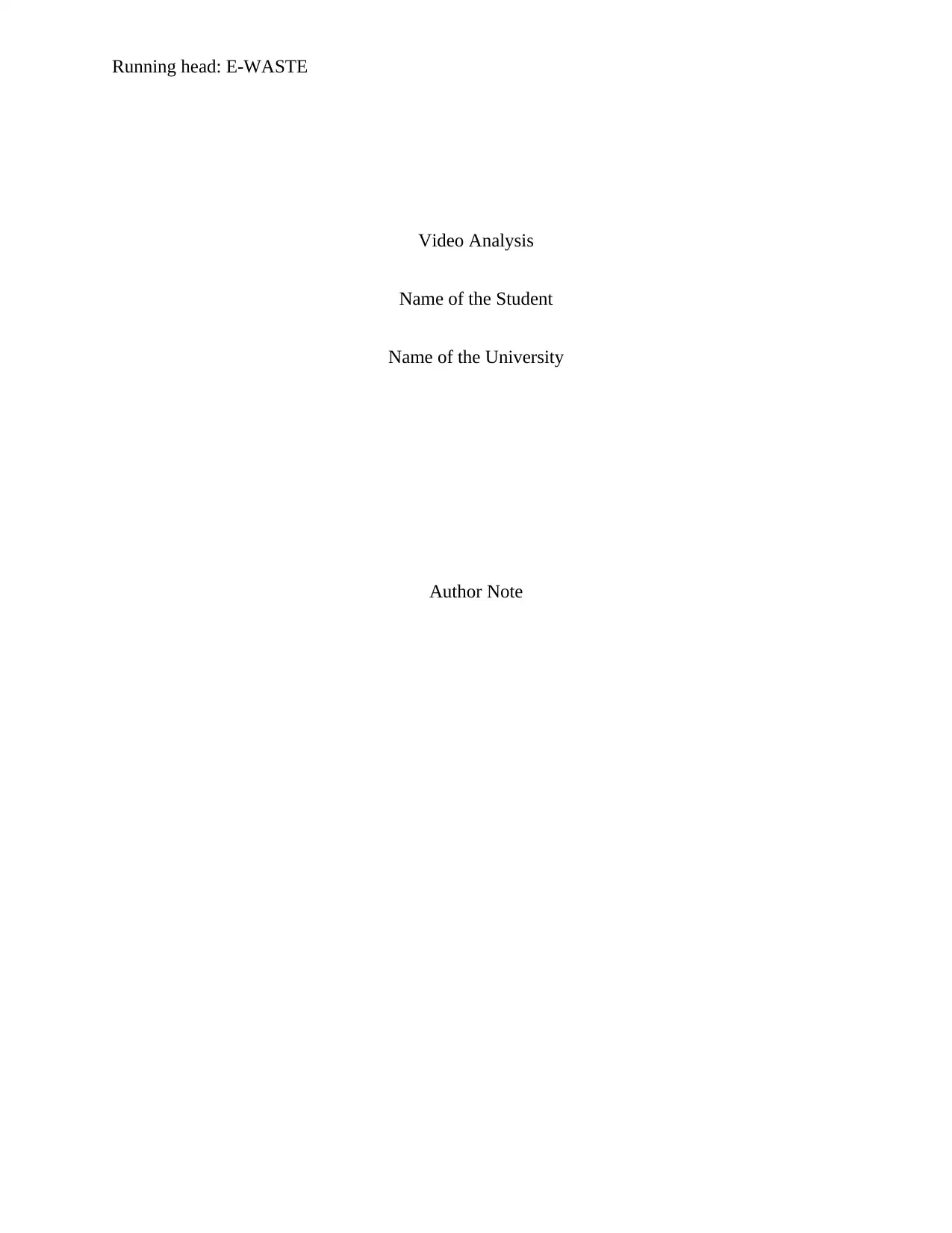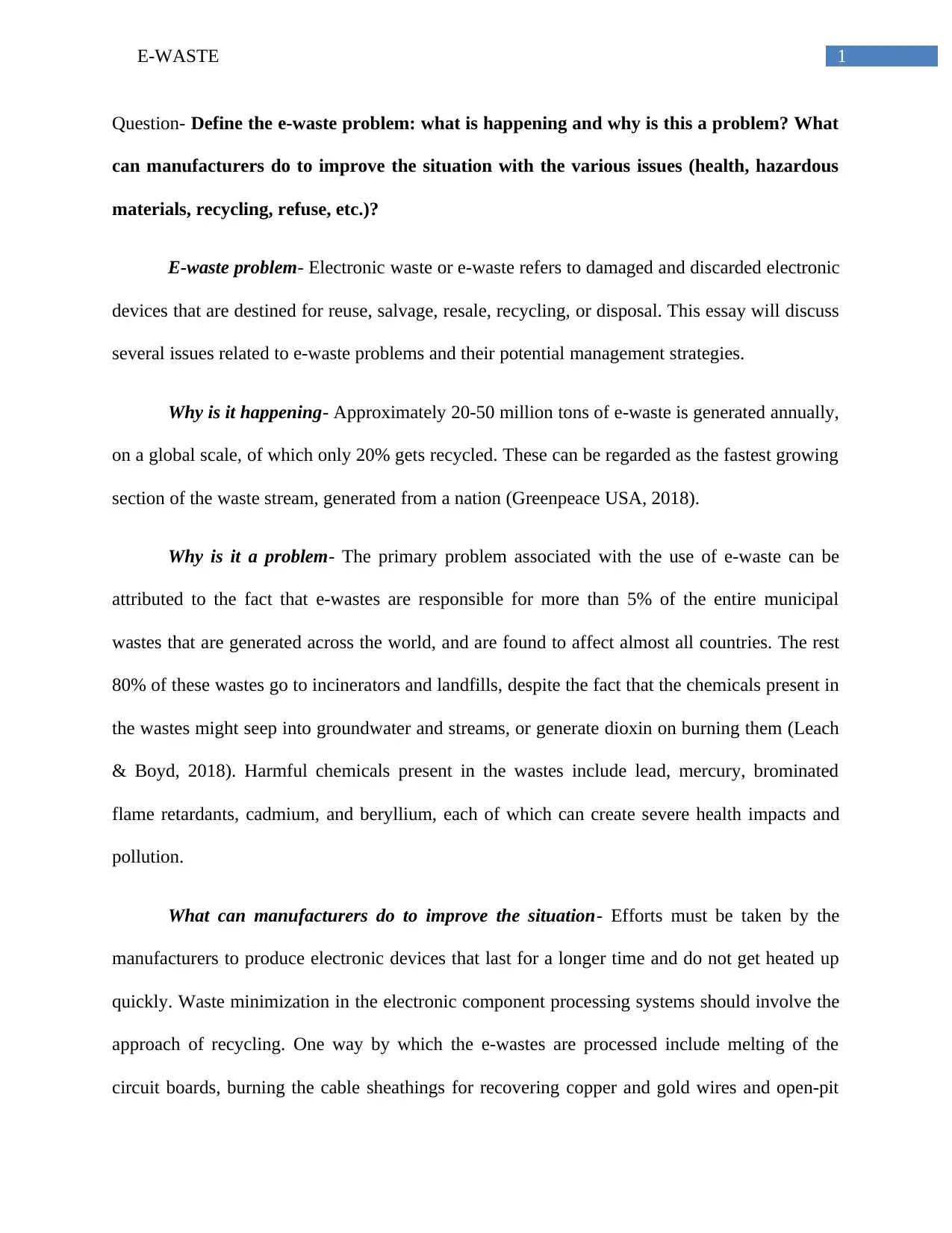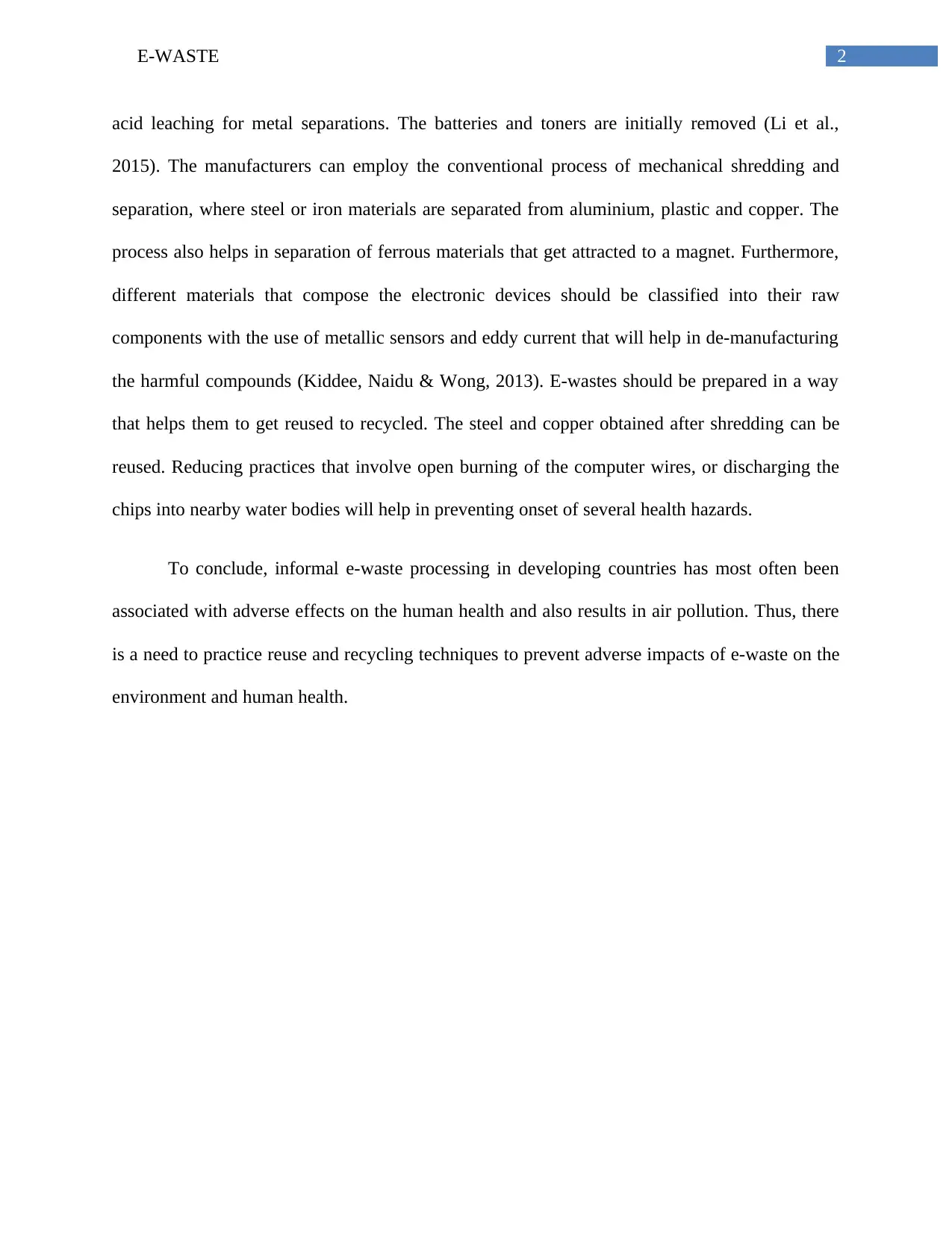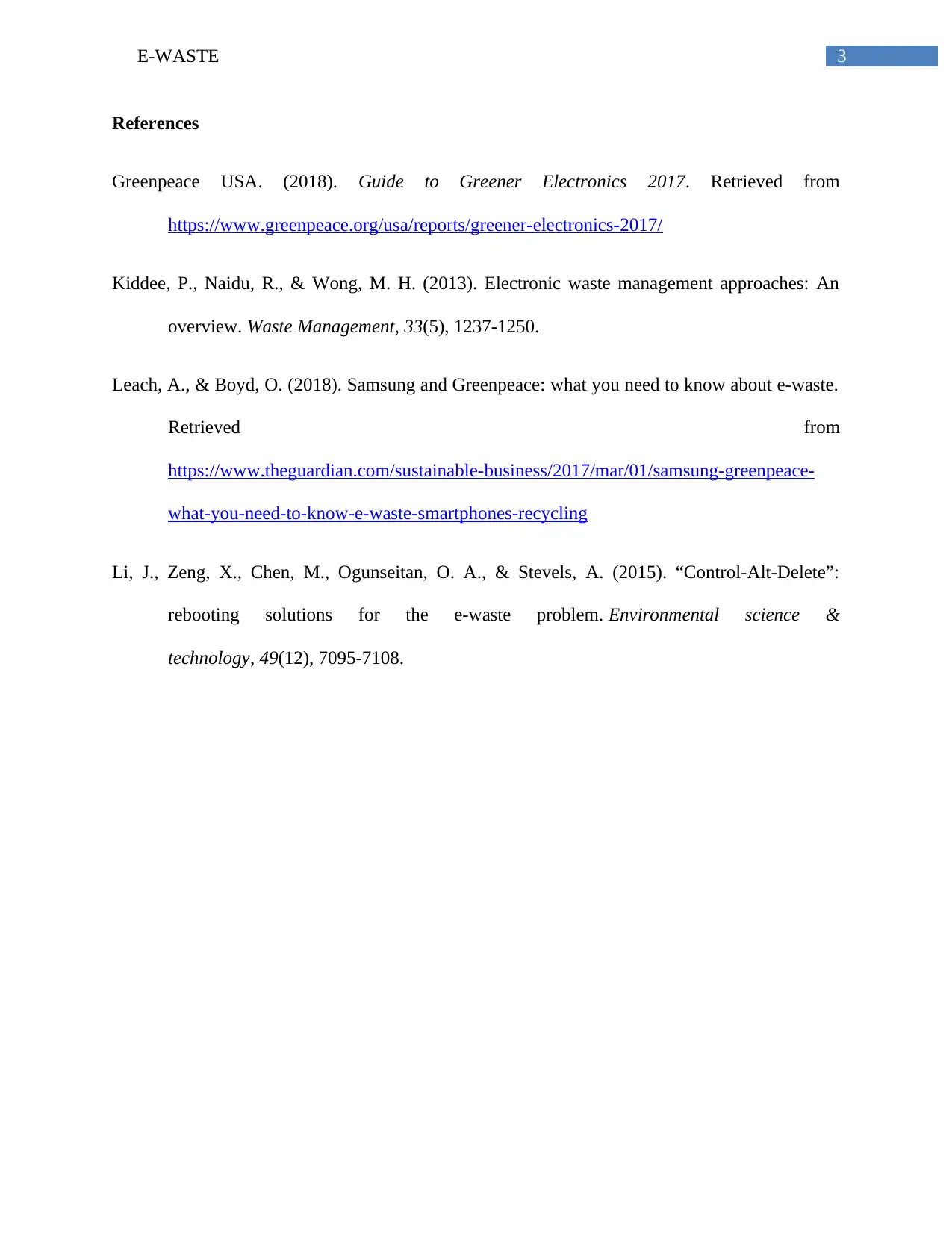E-Waste and Manufacturer Responsibility: A Comprehensive Analysis
VerifiedAdded on 2021/05/31
|4
|705
|17
Essay
AI Summary
This essay analyzes the growing e-waste problem, detailing its causes, impacts, and potential solutions. The essay highlights that a significant amount of e-waste is generated annually, with a small percentage being recycled. The primary issues associated with e-waste include the release of hazardous chemicals into the environment, leading to health impacts and pollution. The essay discusses the role of manufacturers in addressing the problem, suggesting strategies such as producing more durable devices, improving recycling processes, and using materials that can be easily separated and reused. It emphasizes the need for practices that minimize environmental and health hazards, promoting reuse and recycling to mitigate the adverse effects of e-waste on human health and the environment. The essay concludes by underlining the importance of responsible e-waste management to prevent pollution and protect human health.
1 out of 4











![[object Object]](/_next/static/media/star-bottom.7253800d.svg)